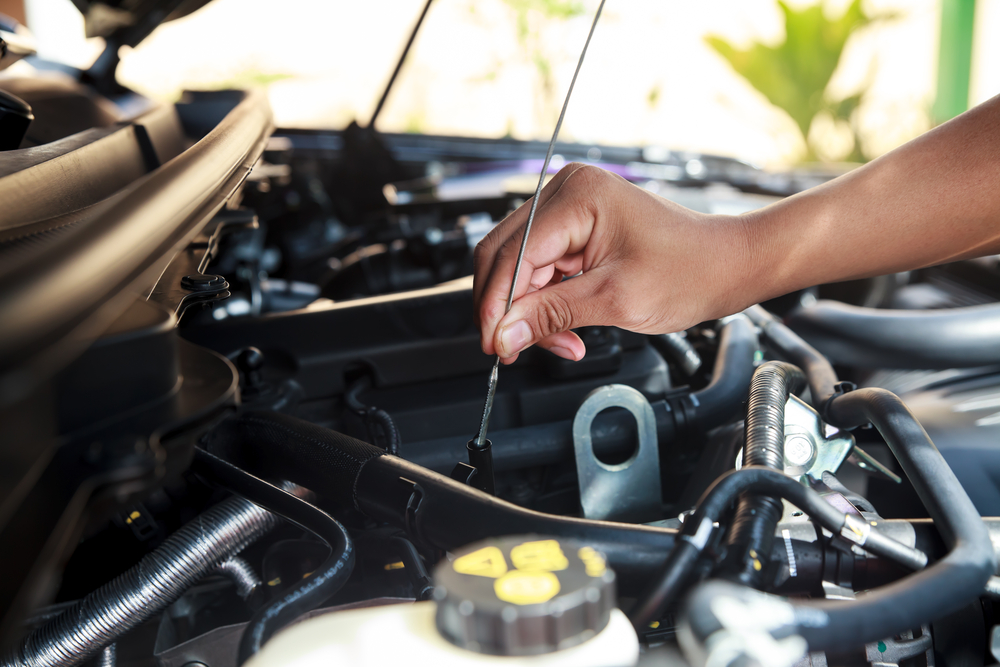All Categories
Featured
When it pertains to automobile maintenance, tires are usually forgotten, in spite of being a vital consider both safety and security and efficiency. Choosing the right collection of tires can make a significant distinction in your driving experience, particularly in terms of handling, fuel effectiveness, and roadway safety. Comprehending how to choose the ideal tires for your car requires recognizing your driving conditions, efficiency demands, and the different tire alternatives available. Here's a thorough overview to help you make the appropriate selection.
![]()
All-Season Tires: These are the most usual type, designed for a selection of driving conditions, including damp and dry roads. They provide a well balanced performance, making them a great option for everyday driving in regions with modest climates.
Summer Tires: Ideal for warmer climates, summertime tires offer outstanding performance on damp and completely dry roadways, providing superior traction and handling. They are not suitable for snowy or icy problems.
Winter Months Tires: Winter season tires are especially designed to manage snow, ice, and freezing temperature levels. Made from an unique rubber substance that stays flexible in winter, they feature deep footsteps that hold the road, providing much better control and safety and security in winter conditions.
Performance Tires: For those driving sporting activities cars and trucks or seeking improved handling, performance tires supply higher responsiveness, collaring capacities, and enhanced grip. These tires prioritize efficiency however might give up convenience and toughness.
225: The size of the tire in millimeters. 50: The element ratio, or the elevation of the sidewall as a percentage of the tire's size. R: Radial building, which is one of the most common layout for modern-day tires. 17: The size of the tire in inches, matching the size of the wheel. When replacing your tires, it's typically best to match the original dimension for your car to maintain the intended balance of comfort, handling, and security. Altering tire dimensions can impact performance, consisting of speedometer accuracy and gas efficiency.
![]()
Urban and City Driving: If a lot of your driving happens on well-paved city streets, all-season tires are usually the finest choice. They provide ample hold and comfort in moderate conditions, with a concentrate on performance.
Freeway Driving: For regular freeway drivers, tires that provide durable durability and low roadway sound, such as visiting tires, are ideal. These tires give a smooth ride and are enhanced for fuel performance over lengthy ranges.
Off-Road Driving: If you drive an SUV or truck and often endeavor off the ruined course, you'll require tires designed for sturdy surface. All-terrain or mud-terrain tires provide much better traction and longevity for driving on gravel, mud, or unpaved roads.
Symmetrical Footstep: Many all-season tires feature a symmetrical step pattern, which provides a balanced efficiency for normal driving conditions. It's optimal for completely dry roads, along with moderate damp problems.
Unbalanced Tread: These tires have different tread patterns on the outdoors and within, enhancing cornering and security. They supply a much better grasp on both completely dry and wet roadways, making them a prominent option for efficiency automobiles.
Directional Tread: Designed with a V-shaped pattern, these tires excel at channeling water far from the tread. They supply much better grip in snowy and wet problems, minimizing the threat of hydroplaning.
Examining Tire Stress: Underinflated tires can negatively influence handling and gas performance, while overinflated tires can increase the risk of blowouts. Examine the tire stress frequently and guarantee it meets the maker's specifications.
Tire Turning: To ensure also put on, tires need to be turned every 6,000 to 8,000 miles. Irregular wear can create premature tire failing and impact your lorry's positioning and handling.
![]()
Wheel Alignment: Imbalance can create your tires to put on unevenly and negatively affect your car's handling. Have your car's placement examined on a regular basis, specifically if you see pulling away.
Final thought. Selecting the ideal tires is an important decision that impacts your car's efficiency, efficiency, and safety. Whether you require all-season tires for everyday driving, winter season tires for snowy conditions, or efficiency tires for better handling, understanding your requirements is vital to making the right selection. Routine tire maintenance is also essential for maintaining your tires in ideal problem. By carefully taking into consideration these factors, you can make sure a smoother, much safer, and much more reliable driving experience.

- Recognizing Tire Kinds. The initial step in choosing the ideal tire is understanding the various types and their functions. Each sort of tire is engineered for specific conditions, so recognizing which one matches your requirements is essential.
All-Season Tires: These are the most usual type, designed for a selection of driving conditions, including damp and dry roads. They provide a well balanced performance, making them a great option for everyday driving in regions with modest climates.
Summer Tires: Ideal for warmer climates, summertime tires offer outstanding performance on damp and completely dry roadways, providing superior traction and handling. They are not suitable for snowy or icy problems.
Winter Months Tires: Winter season tires are especially designed to manage snow, ice, and freezing temperature levels. Made from an unique rubber substance that stays flexible in winter, they feature deep footsteps that hold the road, providing much better control and safety and security in winter conditions.
Performance Tires: For those driving sporting activities cars and trucks or seeking improved handling, performance tires supply higher responsiveness, collaring capacities, and enhanced grip. These tires prioritize efficiency however might give up convenience and toughness.
- Tire Dimension Matters. Tire size is just one of one of the most vital aspects to take into consideration when picking brand-new tires. Tire size is indicated by a collection of numbers printed on the sidewall, such as "225/50R17." Right here's exactly how to read them:
225: The size of the tire in millimeters. 50: The element ratio, or the elevation of the sidewall as a percentage of the tire's size. R: Radial building, which is one of the most common layout for modern-day tires. 17: The size of the tire in inches, matching the size of the wheel. When replacing your tires, it's typically best to match the original dimension for your car to maintain the intended balance of comfort, handling, and security. Altering tire dimensions can impact performance, consisting of speedometer accuracy and gas efficiency.
- Driving Conditions and Tire Performance. Where you drive and just how you drive plays a considerable role in determining the best tire for your lorry. Right here's what to consider based on your driving behaviors:

Urban and City Driving: If a lot of your driving happens on well-paved city streets, all-season tires are usually the finest choice. They provide ample hold and comfort in moderate conditions, with a concentrate on performance.
Freeway Driving: For regular freeway drivers, tires that provide durable durability and low roadway sound, such as visiting tires, are ideal. These tires give a smooth ride and are enhanced for fuel performance over lengthy ranges.
Off-Road Driving: If you drive an SUV or truck and often endeavor off the ruined course, you'll require tires designed for sturdy surface. All-terrain or mud-terrain tires provide much better traction and longevity for driving on gravel, mud, or unpaved roads.
- Tire Footstep Patterns. Tire walk patterns influence how your car grasps the roadway, particularly in unsafe or wet problems. Comprehending tread layout is crucial to making sure risk-free handling:
Symmetrical Footstep: Many all-season tires feature a symmetrical step pattern, which provides a balanced efficiency for normal driving conditions. It's optimal for completely dry roads, along with moderate damp problems.
Unbalanced Tread: These tires have different tread patterns on the outdoors and within, enhancing cornering and security. They supply a much better grasp on both completely dry and wet roadways, making them a prominent option for efficiency automobiles.
Directional Tread: Designed with a V-shaped pattern, these tires excel at channeling water far from the tread. They supply much better grip in snowy and wet problems, minimizing the threat of hydroplaning.
- Tire Maintenance for Longevity. When you have actually chosen the appropriate tires, it's critical to preserve them appropriately to expand their lifespan and make sure ongoing performance. Regular tire upkeep consists of:
Examining Tire Stress: Underinflated tires can negatively influence handling and gas performance, while overinflated tires can increase the risk of blowouts. Examine the tire stress frequently and guarantee it meets the maker's specifications.
Tire Turning: To ensure also put on, tires need to be turned every 6,000 to 8,000 miles. Irregular wear can create premature tire failing and impact your lorry's positioning and handling.

Wheel Alignment: Imbalance can create your tires to put on unevenly and negatively affect your car's handling. Have your car's placement examined on a regular basis, specifically if you see pulling away.
- Seek advice from an Expert. While you might have a general understanding of the sorts of tires offered, it's always a good concept to speak with a tire professional. They can supply experienced suggestions based on your certain vehicle model, driving conditions, and efficiency requirements.
Final thought. Selecting the ideal tires is an important decision that impacts your car's efficiency, efficiency, and safety. Whether you require all-season tires for everyday driving, winter season tires for snowy conditions, or efficiency tires for better handling, understanding your requirements is vital to making the right selection. Routine tire maintenance is also essential for maintaining your tires in ideal problem. By carefully taking into consideration these factors, you can make sure a smoother, much safer, and much more reliable driving experience.
Latest Posts
Flooring Professionals Who Treat You Like Family Members
Published Apr 19, 25
1 min read
Customized Wide Range Monitoring with WyHy Federal Cooperative Credit Union
Published Apr 19, 25
1 min read
Emergency Situation Roof Covering Repair Work-- Stopping Leakages in Their Tracks
Published Apr 19, 25
1 min read
More
Latest Posts
Flooring Professionals Who Treat You Like Family Members
Published Apr 19, 25
1 min read
Customized Wide Range Monitoring with WyHy Federal Cooperative Credit Union
Published Apr 19, 25
1 min read
Emergency Situation Roof Covering Repair Work-- Stopping Leakages in Their Tracks
Published Apr 19, 25
1 min read